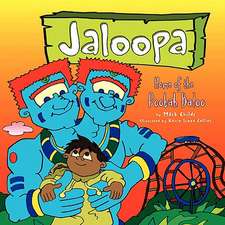Online Learning for STEM Subjects: International Examples of Technologies and Pedagogies in Use
Editat de Mark Childs, Robby Soetantoen Limba Engleză Hardback – 16 ian 2017
In particular, these approaches to STEM+ provision show how the internationalization of education can be made more effective and accessible through the exploitation of collaborative technologies and non-traditional pedagogies. The approaches address the following themes:
- technologies for distance learning and collaboration
- pedagogies for online learning
- remote communication and collaboration
| Toate formatele și edițiile | Preț | Express |
|---|---|---|
| Paperback (1) | 311.00 lei 6-8 săpt. | |
| CRC Press – 18 dec 2020 | 311.00 lei 6-8 săpt. | |
| Hardback (1) | 1109.84 lei 6-8 săpt. | |
| CRC Press – 16 ian 2017 | 1109.84 lei 6-8 săpt. |
Preț: 1109.84 lei
Preț vechi: 1353.46 lei
-18% Nou
Puncte Express: 1665
Preț estimativ în valută:
212.36€ • 221.74$ • 175.36£
212.36€ • 221.74$ • 175.36£
Carte tipărită la comandă
Livrare economică 15-29 aprilie
Preluare comenzi: 021 569.72.76
Specificații
ISBN-13: 9781138934443
ISBN-10: 1138934445
Pagini: 208
Ilustrații: 23
Dimensiuni: 156 x 234 x 17 mm
Greutate: 0.47 kg
Ediția:1
Editura: CRC Press
Colecția Routledge
ISBN-10: 1138934445
Pagini: 208
Ilustrații: 23
Dimensiuni: 156 x 234 x 17 mm
Greutate: 0.47 kg
Ediția:1
Editura: CRC Press
Colecția Routledge
Public țintă
Postgraduate and ProfessionalCuprins
Editor’s introduction
Part one: Lead case study: International collaboration for multidisciplinary built environment education
1. International collaboration for multidisciplinary built environment education
2. Virtual teamworking with undergraduates and postgraduates in the Learning to Create a Better Built Environment project
3. Experiences of online collaborative design in asynchronous and synchronous working: findings of the BIM Hub project
4. Designed to be employed? Measuring the impact of a multidisciplinary collaborative design project on learner perceptions of employability attributes
5. BIM-Hub Project Evaluation: Principles, Protocols, Methodologies and Outcomes
Part two: complementary case studies
6. A comparison of MOOC development and delivery approaches
7. Centralised and Decentralised Virtual Lab Approaches for Information and Computer Technology Education
8. Learning to Create a Better Built Environment
9. Successful Education of Professionals for Supporting Future BIM Implementation Within the Architecture Engineering Construction Context
10. Conclusion: Online Learning for STEM Subjects
Part one: Lead case study: International collaboration for multidisciplinary built environment education
1. International collaboration for multidisciplinary built environment education
2. Virtual teamworking with undergraduates and postgraduates in the Learning to Create a Better Built Environment project
3. Experiences of online collaborative design in asynchronous and synchronous working: findings of the BIM Hub project
4. Designed to be employed? Measuring the impact of a multidisciplinary collaborative design project on learner perceptions of employability attributes
5. BIM-Hub Project Evaluation: Principles, Protocols, Methodologies and Outcomes
Part two: complementary case studies
6. A comparison of MOOC development and delivery approaches
7. Centralised and Decentralised Virtual Lab Approaches for Information and Computer Technology Education
8. Learning to Create a Better Built Environment
9. Successful Education of Professionals for Supporting Future BIM Implementation Within the Architecture Engineering Construction Context
10. Conclusion: Online Learning for STEM Subjects
Notă biografică
Mark Childs is a Senior Lecturer in Technology Enhanced Learning at Oxford Brookes University, UK, supporting staff in developing their digital capabilities. Mark has been working in higher education since 1995 as a researcher in the use of technology for learning and teaching. Mark’s main research area has been the study of learners’ experiences of synchronous technologies in higher education and the role of presence and embodiment in supporting learning in these. His PhD in education was completed in 2010.
Robby Soetanto is Senior Lecturer in Construction Management at Loughborough University, UK. Prior to this, he held post-doctoral research posts at Wolverhampton and Loughborough Universities and lectured at Coventry University. His research has been funded by government bodies (EPSRC, EU, HEA, British Council) and private companies (Lloyds TSB and Hewlett Packard). He led Learning to Create a Better Built Environment and BIM-Hub projects, which focus on developing virtual collaboration skills of built environment students and provide the basis of the first part of this book.
Robby Soetanto is Senior Lecturer in Construction Management at Loughborough University, UK. Prior to this, he held post-doctoral research posts at Wolverhampton and Loughborough Universities and lectured at Coventry University. His research has been funded by government bodies (EPSRC, EU, HEA, British Council) and private companies (Lloyds TSB and Hewlett Packard). He led Learning to Create a Better Built Environment and BIM-Hub projects, which focus on developing virtual collaboration skills of built environment students and provide the basis of the first part of this book.
Descriere
This unique collection of case studies shows how cutting edge technologies have been used in teaching STEM subjects remotely to students in 4 different continents. The topics covered include technologies for distance learning and collaboration, pedagogies for online learning, and remote communication. this is essential reading for any lecturers involved in the teaching STEM subjects via distance learning, partciuclarly in the AEC subjects.




















